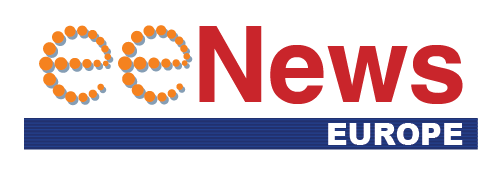
Silicon Labs launches first energy harvesting wireless chips, teams with e-peas
 Cette publication existe aussi en Français
Cette publication existe aussi en Français
Silicon Labs has launched its first wireless microcontroller optimized for energy harvesting and worked with Belgium PMIC supplier e-peas on shields for its development kit.
The xG22E family is the first microcontroller from Silicon Labs to support low power supplies from energy harvesting sources such as solar and thermal. The family consists of the BG22E, MG22E, and FG22E and supports 2.4GHz Bluetooth Low Energy (LE) or 802.15.4-based wireless protocols for battery and battery-free designs.
To help device manufacturers build a complete energy harvesting solution, Silicon Labs is also partnering with e-peas, co-developing two energy harvesting shields for the energy-optimized xG22E Explorer Kit.
- CEO interview: Geoffroy Gosset of e-peas
- e-peas details ultra low power microcontroller for energy harvesting
- Silicon Labs, Arduino team on Nano board for Matter
The xG22E Explorer Kit allows developers to customize the peripherals and debugging options that best match an application and get highly accurate measurements to better build their applications and devices with the energy harvesting shields.
The energy harvesting shields are each tuned and optimized for different energy sources and energy storage technologies. They are custom designed to slot onto the Explorer Kit. One shield uses the e-peas AEM13920 dual-harvester, which allows it to pull energy simultaneously from two distinct energy sources such as indoor or outdoor light, thermal gradients, and electromagnetic waves without sacrificing on energy conversion efficiency. The second co-developed shield is based on e-peas’ AEM00300 shield, and is dedicated to harvesting power from random pulsed energy sources.
A key part of the design of the xG22E family is high speed, low-energy cold start for applications starting from a zero-energy state to transmit packets and then rapidly return to sleep. An xG22E device wakes up in only eight milliseconds and uses only 150 micro-Joules, or roughly 0.003% of the energy needed to power a 60-watt equivalent LED lightbulb for one second.
Energy conserving deep sleep swift wake-up reduces wake-up energy by 78% compared to other Silicon Labs devices. A power-efficient energy mode transition is used to smoothly transition in and out of energy modes by mitigating current spikes or inrush which can harm energy storage capacity.
Multiple deep sleep wake-up options, such as RFSense, GPIO, and RTC wake-up sources from the deepest EM4 sleep mode, are suitable for extended storage.
“As the market for energy harvesting and low-power solutions grows, Silicon Labs remains dedicated to enhancing our wireless MCU and radio stack capabilities to advance the development of battery-free IoT solutions,” said Ross Sabolcik, Senior Vice President for the Industrial and Commercial Business Unit at Silicon Labs. Our efforts to prioritize energy efficiency and increase device longevity underscore our commitment to fostering a more sustainable IoT ecosystem.”
- e-peas in strategic deal for battery free connected devices
- Silicon Labs sees first billion dollar year in 2023
- Silicon Labs details hardware ML on wireless chip
Using energy harvesting can extend the lifetime of battery cells in the Internet of Things, saving on replacement costs when dealing with millions of batteries. In certain low power applications the battery can be eliminated entirely.
For example, electronic shelf labels are being rapidly adopted by retailers across the globe to allow for more accurate pricing, inventory management, and even loss prevention. However, with a single location having as many as thousands of labels, they require a lot of batteries. Fortunately, electronic shelf labels do not need a lot of power, nor do they require always-on connectivity, making them an excellent fit for energy harvesting. By using Ambient IoT energy sources, retailers can reduce or eliminate their need for batteries for shelf labels. Other examples in the consumer space include television remote controls that use solar energy and movable, wireless light or appliance switches where e-peas has a number of key design wins such as Samsung.
As part of the launch, Silicon Labs has a new Energy Harvesting page
 If you enjoyed this article, you will like the following ones: don't miss them by subscribing to :
eeNews on Google News
If you enjoyed this article, you will like the following ones: don't miss them by subscribing to :
eeNews on Google News







